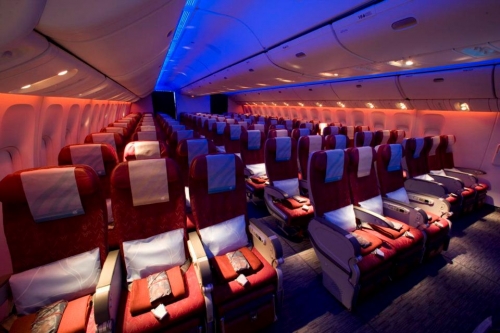Grim figures show 86 percent of seats fly into Australia empty.
24 March, 2021
2 min read


Gulf carriers Qatar Airways and Singapore Airlines remain Australia’s biggest international carriers as bleak figures show that almost 86 percent of seats flying into Australia remained empty in January.
People stranded overseas may be surprised to learn that 47 international airlines operated scheduled services to and from Australia in January, although five of those were dedicated freight carriers.
But the number of seats on international flights slumped 90.6 percent compared to January 2020 to 477,378, according to Australian government figures released Wednesday.
READ: Rex challenges Qantas on Sydney-Canberra.
This was still several multiples of the number of travelers filling those seats as government restrictions cut international scheduled passenger traffic by 98.4 percent — from 4.15 million to just 67,472.
Overall seat utilization plummeted from 83.6 percent the previous January to just 14.1 percent thanks to government limitations on quarantine places.
READ: The exotic airline offices of yesteryear.
With Australian carriers reduced to a token presence on international routes, Qatar and Singapore shared the number one passenger market share ranking of 14.1 percent.
Air New Zealand was next at 12.7 percent share followed by Emirates at 9 percent and China Southern at 6.1 percent.
The top city pairs were Sydney-Auckland, Sydney-Los Angeles, Melbourne-Auckland, Sydney-Singapore, and Brisbane-Auckland.
The Qantas Group wasn’t entirely absent with a 1.6 percent share of total January passenger carriage, compared to just over 25 percent a year earlier.
However, that was basically it for Australian designated carriers. This was a group that had boasted a 31.9 percent market share when Virgin Australia was still operating overseas in January 2020.
On the low-cost front, Scoot and Jetstar accounted for 1.7 percent of international traffic in a sector that had claimed a 15.6 percent market share a year ago.
The situation was less parlous for freight operators, with international scheduled freight down 14.4 percent to 72, 548 tonnes.
Inbound freight fell 7.1 percent while outbound was down 20.5 percent.
Next Article
2 min read
Qantas triples profit but misses mark

Get the latest news and updates straight to your inbox
No spam, no hassle, no fuss, just airline news direct to you.
By joining our newsletter, you agree to our Privacy Policy
Find us on social media
Comments
No comments yet, be the first to write one.
